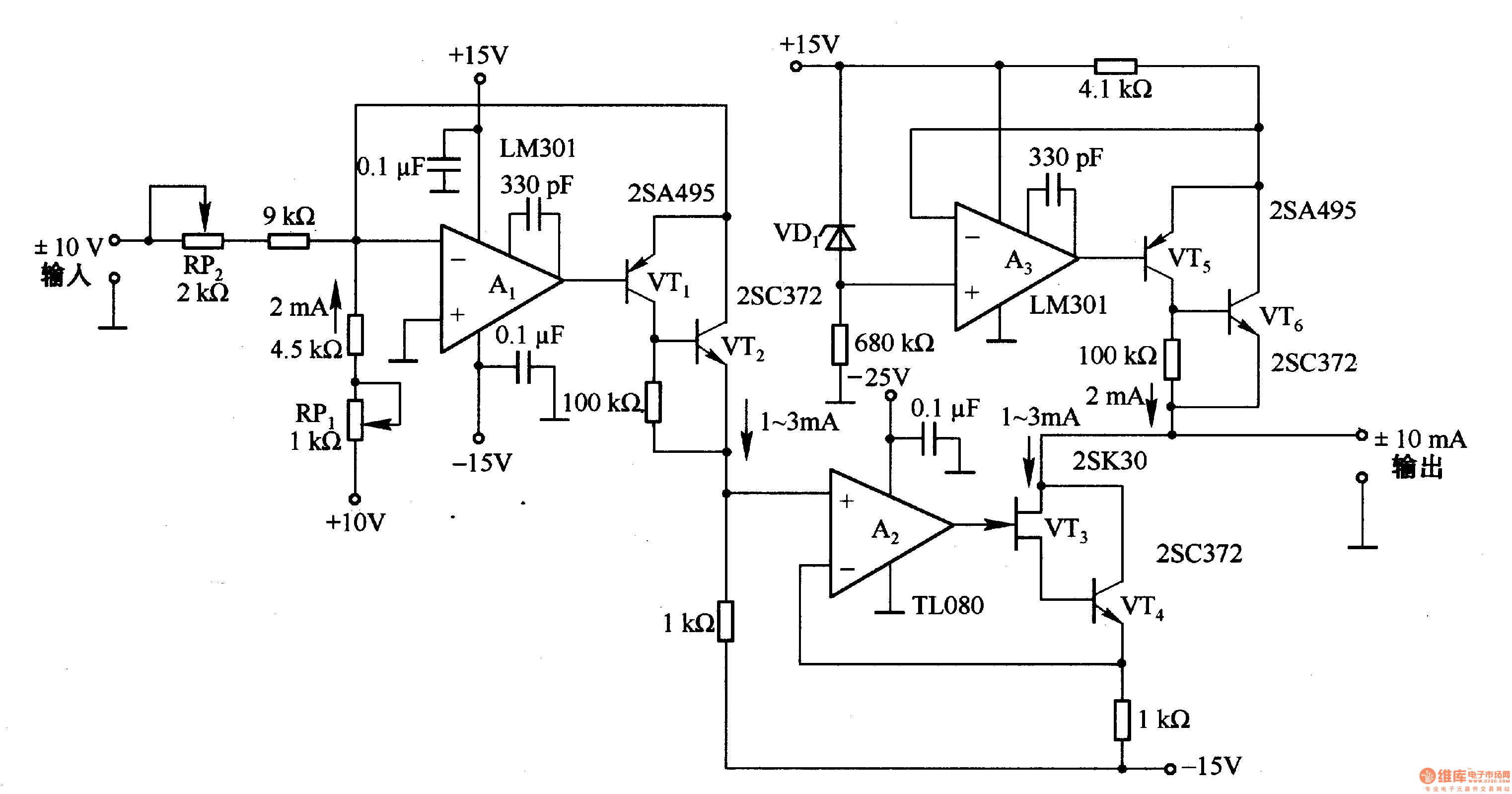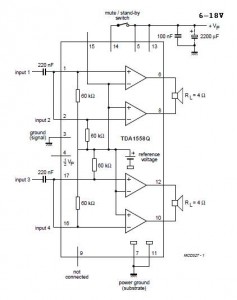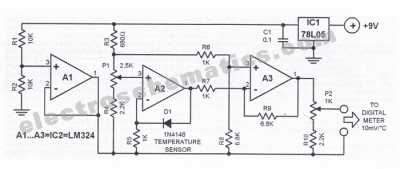
Voltage/current conversion circuit composed of LM301

This circuit is designed for voltage-to-current conversion, specifically transforming a ±10V input voltage into a ±1mA output current. The conversion process is facilitated by operational amplifier A1 and transistors VT1 and VT2, which are responsible for altering the current direction. A bias current of 2mA is applied at the input; thus, when the input voltage is 0V, a current of 2mA flows through the circuit. Additionally, the output stage incorporates a 2mA constant current source.
The voltage-to-current conversion circuit operates by utilizing an operational amplifier (A1) configured in a feedback loop to maintain a precise output current that corresponds to the input voltage. The transistors (VT1 and VT2) function as switches that control the direction of the output current, allowing for both positive and negative current outputs depending on the input voltage polarity.
The circuit's design includes a biasing mechanism that ensures a constant 2mA current flows when the input voltage is at 0V. This feature is essential for applications that require a baseline current level for proper operation. The inclusion of a constant current source at the output further stabilizes the output current, ensuring that it remains at 2mA regardless of variations in load resistance.
In practical applications, this circuit can be utilized in sensor interfacing, where voltage signals from sensors need to be converted into current signals for further processing or transmission. The precision of the operational amplifier and the current control provided by the transistors make this circuit suitable for high-performance requirements in industrial and scientific instrumentation. Overall, the design is robust and reliable, providing a straightforward solution for voltage-to-current conversion tasks.It is the conversion circuit, which can transform ±10V voltage into ±lmA, and the input voltage is changed into current by the A1 and VTl, VT2, and it is used to change the current direction. The input end is added 2mA bias current, when the input voltage is OV, there is 2mA current flowing; the output termination is added 2mA constant current source circu..
🔗 External reference
The voltage-to-current conversion circuit operates by utilizing an operational amplifier (A1) configured in a feedback loop to maintain a precise output current that corresponds to the input voltage. The transistors (VT1 and VT2) function as switches that control the direction of the output current, allowing for both positive and negative current outputs depending on the input voltage polarity.
The circuit's design includes a biasing mechanism that ensures a constant 2mA current flows when the input voltage is at 0V. This feature is essential for applications that require a baseline current level for proper operation. The inclusion of a constant current source at the output further stabilizes the output current, ensuring that it remains at 2mA regardless of variations in load resistance.
In practical applications, this circuit can be utilized in sensor interfacing, where voltage signals from sensors need to be converted into current signals for further processing or transmission. The precision of the operational amplifier and the current control provided by the transistors make this circuit suitable for high-performance requirements in industrial and scientific instrumentation. Overall, the design is robust and reliable, providing a straightforward solution for voltage-to-current conversion tasks.It is the conversion circuit, which can transform ±10V voltage into ±lmA, and the input voltage is changed into current by the A1 and VTl, VT2, and it is used to change the current direction. The input end is added 2mA bias current, when the input voltage is OV, there is 2mA current flowing; the output termination is added 2mA constant current source circu..
🔗 External reference





